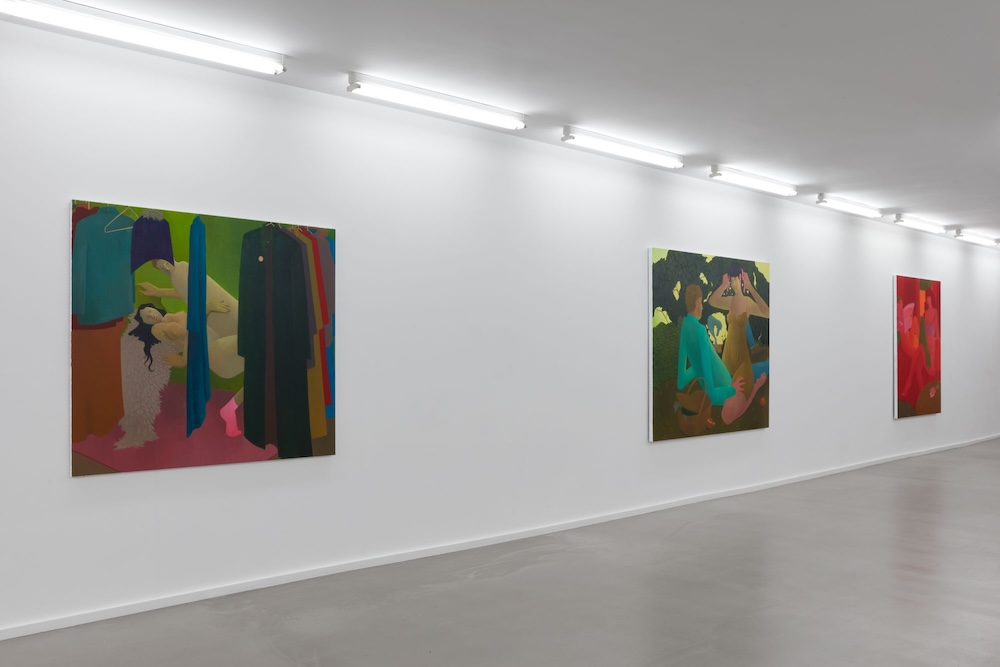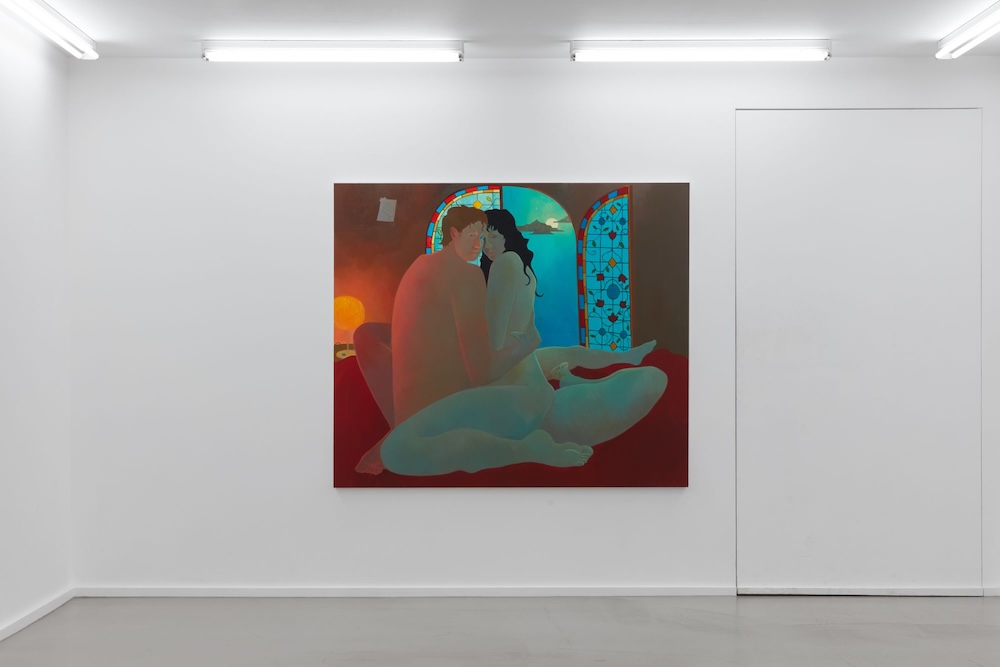Following on from the success of her show with Thierry Goldberg in 2023, PM/AM is pleased to present Natalie Terenzini’s first solo exhibition in London. Her focus for the body of work that forms this exhibition is a couple, painted in richly toned interior settings. Moving away from the sole female figure, a likeness of herself who resides inmost of her previous work, Natalie’s portrayal of this pair is primarily driven by a desire to explore romance and intimacy.
Outside an arched window opening a glowing moon sits partially obscured by dark grey clouds, radiating light outwards and away from itself, down towards the earth and throughout space. A single star can be seen nearby, and the painted background immediately behind is a luminous blue, possibly the site of various nebulae and other unimaginable mysteries of the universe. A stained glass window forms the border between outside and inside, split vertically in half to create two hinged openings. One of these is folded back into the room, letting the night and moonlight in.
Natalie Terenzini’s vast artistic capabilities coalesce in bold, vivid paintings that hold atmosphere and the depth of human connection aloft. These key elements are the life and backbone of her work, straddling a midpoint that blends the physical and corporeal with the ephemeral and enchanting.
The scene outside the window is confined to the exterior space in construction only. Thinking more cerebrally and sensually, it diffuses a particular resonance throughout the painting. From its lunar source, held in the cosmos, its course towards us infuses it with meaning and purpose. By the time it filters through the window and fuses itself with the warmth of the room it has become a grounding, benevolent and trusting force. It hides within the fabric of the environment whilst retaining presence, like the buzz of electrical equipment on standby, just within earshot.
The interior space in the aptly titled Afterglow is occupied by two figures, caught in what we assume to be a romantic entanglement. Their heads are held close enough together that one slightly hides the other, a male hand rests comfortingly on the female's back, legs are entwined in a lazy geometry. Although communicated clearly, the intimacy of the scene is complicated, perhaps compromised, concealing secret narratives. Going against the grain of more common depictions of embracing lovers, Natalie wishes to remind us of other realities that surround our relationships—quietude, boredom, the long spaces between the moments of peak experience.
Associated more with the single figure, a likeness of herself, this new series is the first in which each of Natalie’s paintings features two subjects. The same couple appears in a variety of settings, each one partly inspired by real places and situations from the artist’s life. Symbolic items appear, suggesting a sense of history and believable lives—a diary on a desk, a newspaper, a handwritten note stuck to a wall.
In tone and construction the paintings are fantastical. Colours are saturated to unreal levels and bodies are extended into exaggerated form. In a work like Luncheon on the Grass –the only one from the series that is set outside– the sky is a pallid yellow that would make national news were it ever to exist in our reality. Despite these steps into a heavily augmented view of existence however, one of the most alluring aspects of Natalie’s work is how the more surreal parts of it somehow make it more real and more accessible.
To understand this we can look beyond the visual presence of these elements, considering instead their role in representing the potency of emotion, especially when shared in heightened scenarios. In combination with the relative mundanity of the scenes, it completes the picture of a particular kind of romance—one that is valid and enduring without the pressure of drama and excitement. —Daniel Mackenzie

























